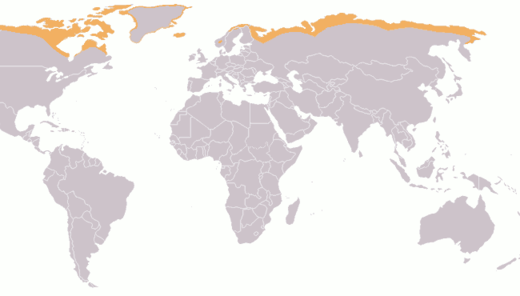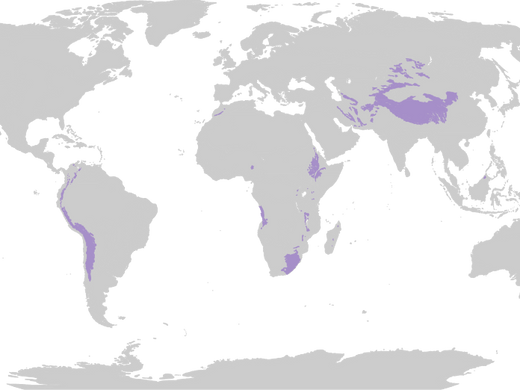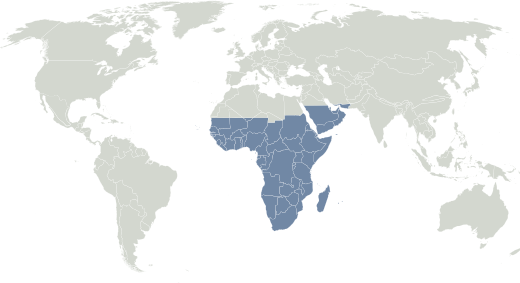top of page
The earth provides everything you need
Your Guide to Plant Care


Biomes
A biome is a distinct geographical region with specific climate, vegetation, and animal life. It consists of a biological community that has formed in response to its physical environment and regional climate.
Aug 283 min read


Mangrove (MAN)
Mangroves are unique and vital ecosystems that are characterised by their distinctive waterlogged, salty soils, which create a challenging environment for plant life. These remarkable trees and shrubs thrive along sheltered tropical and subtropical shores, where they are frequently exposed to a dynamic interplay of tidal influences. The mangrove ecosystem experiences daily and seasonal fluctuations in water flow, which can significantly impact the surrounding environment and
Aug 282 min read


Deserts and Xeric Shrub lands (DXS)
Deserts and Xeric Shrub lands collectively represent the largest terrestrial biome on our planet, encompassing an astonishing 19% of Earth's total land surface area. This extensive habitat type is characterised by a wide range of eco-regions, each exhibiting significant variability in the amount of annual rainfall they receive. Typically, these regions experience less than 250 millimetres (10 inches) of precipitation annually, with the exception of the margins where condition
Aug 282 min read


Mediterranean forests, woodlands and shrub (MFW)
Mediterranean forests, woodlands and scrub are a biome characterised by dry summers and rainy winters, although some regions may experience consistent rainfall throughout the year. Summers are generally hot in low-lying inland areas but can be cooler near colder seas. Winters tend to be mild to cool in low-lying areas but can become cold in inland and higher elevations. These eco-regions are uniquely diverse, collectively containing 10% of the Earth's plant species.
Aug 281 min read


Tundra (TUN)
Arctic tundra, a unique and fragile ecosystem, is predominantly found in the far reaches of the Northern Hemisphere, specifically situated north of the expansive taiga belt, which is characterised by its coniferous forests. The term "tundra" is commonly used to describe regions where the subsoil remains permanently frozen, a phenomenon known as permafrost. This frozen layer can extend deep beneath the surface, and while "tundra" can refer to any treeless plain
Aug 262 min read


Montane grasslands and shrublands (MGS)
High elevation (montane and alpine) grasslands and shrublands. The plants and animals of tropical Montane Paramos display unique adaptations to cool, wet conditions and intense sunlight.
Aug 262 min read


Flooded Grasslands and Savannahs (FGS)
The Flooded Grasslands and Savannas (FGS) biome support a large diversity of resident plants and animals and are essential areas for migratory birds and mammals. The hydrological system's integrity is essential for these habitats. Some flooded grasslands are flooded all year long, while others are subject to seasonal flooding patterns, which in turn create a seasonal abundance in resources.
Aug 262 min read


Temperate grasslands, savannahs & shrublands (TGS)
The predominant vegetation in the Temperate grasslands, savannahs & shrublands biome consists primarily of grasses and/or shrubs, which play a crucial role in the ecosystems overall health and functionality. These areas are characterised by a temperate climate that can vary significantly, ranging from semi-arid conditions, which experience limited rainfall and have a more drought-resistant flora, to semi-humid conditions, where precipitation is more abundant, allowing for a r
Aug 263 min read


Tropical and subtropical grasslands, savannahs, and shrub-lands (TSG)
In the tropics, this biome is defined by large areas of land that do not receive enough rainfall to support extensive tree cover. Tropical and subtropical grasslands, savannas and shrublands are characterised by rainfall levels between 90 - 150 cm per year.
Aug 262 min read


Taiga & Boreal Forests (BFT)
Taiga & Boreal Forests (BFT) is a unique and expansive biome characterised predominantly by coniferous forests that primarily consist of tree species such as pines, spruces, and larches. This biome, often referred to as the taiga or boreal forest, holds the distinction of being the largest terrestrial biome on Earth, spanning vast areas across the northern latitudes.
Aug 263 min read


Temperate coniferous forests (TCF)
Temperate coniferous forests are unique ecosystems located in regions characterised by warm summers and cool winters. These forests exhibit a remarkable diversity in plant life, ranging from needleleaf trees, which are well-adapted to withstand colder temperatures, to broadleaf evergreen trees that thrive in milder conditions. Additionally, many temperate evergreen forests feature a combination of both tree types, creating a rich tapestry of biodiversity that supports various
Aug 262 min read


Temperate Broadleaf and Mixed Forests (TBM)
Temperate broadleaf and mixed forests are predominantly found in regions characterized by distinct warm and cool seasons, which encompass a variety of climates such as humid continental, humid subtropical, and oceanic. These climates are critical to the development and sustainability of these forests, providing moderate annual average temperatures that typically range from 3 to 23 °C (37 to 73 °F).
Aug 263 min read


Tropical and Subtropical Coniferous Forests (TSC)
Tropical and subtropical coniferous forests represent a distinct and vital tropical forest habitat type, as classified by the World Wide Fund for Nature. These unique forests are predominantly located across the regions of North and Central America, where they thrive in environments characterised by relatively low levels of precipitation and moderate variability in temperature.
Aug 262 min read


Tropical and Subtropical Dry Broadleaf Forests (TSD)
Tropical and Subtropical Dry Broadleaf Forests (TSD) are situated in tropical and subtropical regions, often in areas marked by distinct seasonal variations. These forests exist in climates that remain warm throughout the year, with average temperatures rarely falling below 20°C. They typically receive several hundred millimetres of rain annually, concentrated in a brief wet season, but also endure long dry periods lasting several months, depending on geographic location and
Aug 262 min read


Tropical & Subtropical Moist Broadleaf Forests (TSM)
Tropical and Subtropical Moist Broadleaf Forests are remarkable ecosystems, distinguished by their low variability in annual temperature and exceptionally high levels of precipitation, often exceeding 2000 mm per year. These unique climatic conditions foster an environment that supports the highest levels of species diversity found in any terrestrial biome. In fact, it is estimated that these forests are home to approximately half of the world's terrestrial species
Aug 263 min read


Earths Realms
The earth is divided into eight (8) land realms and twelve (12) ocean realms based on the similar adaptation of species caused by major...
Aug 261 min read


Neotropical (NT)
The Neotropic or Neotropical (NT) realm is one of the eight terrestrial realms. This realm includes Florida, Central Florida, South America, Central America, the Caribbean Islands, and southern North America. In Mexico, the Yucatán Peninsula and southern lowlands, and most of the east and west coastlines, including the southern tip of the Baja California Peninsula
Aug 261 min read


Nearctic (NA)
The Nearctic (NA) realm is recognised as one of the eight distinct biogeographic realms that make up the terrestrial surface of our planet. This realm primarily encompasses the vast expanse of Northern America, which stretches from the frigid northern reaches of Canada down to the warmer climates of northern Mexico.
Aug 212 min read


Indomalayan (IM)
The Antarctic (AN) is one of the eight major biogeographical realms, consisting mainly of a single bioregion covering the mainland continent of Antarctica. It also includes two marine bioregions: the Antarctic Peninsula & Scotia Sea and the Subantarctic Indian Ocean Islands. Most of Continental Antarctica is inhospitable, but it has some coastal tundra. The Antarctic Peninsula & Scotia Sea bioregion, extending towards South America, hosts abundant wildlife
Aug 212 min read


Afrotropical (AT)
The Afrotropical realm is one of the eight biogeographic realms on Earth. It encompasses Africa south of the Sahara Desert, most of the Arabian Peninsula, the island of Madagascar, southern Iran, extreme southwestern Pakistan, and the islands in the western Indian Ocean. Previously, it was referred to as the Ethiopian Zone or Ethiopian Region.
Jun 182 min read


Antarctic (AN)
The Antarctic (AN) is one of the eight major biogeographical realms, consisting mainly of a single bioregion covering the mainland continent of Antarctica. It also includes two marine bioregions: the Antarctic Peninsula & Scotia Sea and the Subantarctic Indian Ocean Islands. Most of Continental Antarctica is inhospitable, but it has some coastal tundra. The Antarctic Peninsula & Scotia Sea bioregion, extending towards South America, hosts abundant wildlife
Jun 181 min read


Australasia (AA)
Australasia (AA), a region of Oceania, comprises Australia, New Zealand, the island of New Guinea, and neighbouring islands in the Pacific Ocean. Australasie named in 1756 by Charles de Brosses means "south of Asia" and differentiated the area from Polynesia (to the east) and the southeast Pacific (Magellanica)
Jun 181 min read


Townsville Plains (BBN01)
Resource information for Townsville Plains (BBN01) including local species and where to find local natural resources.
Jan 62 min read
bottom of page
